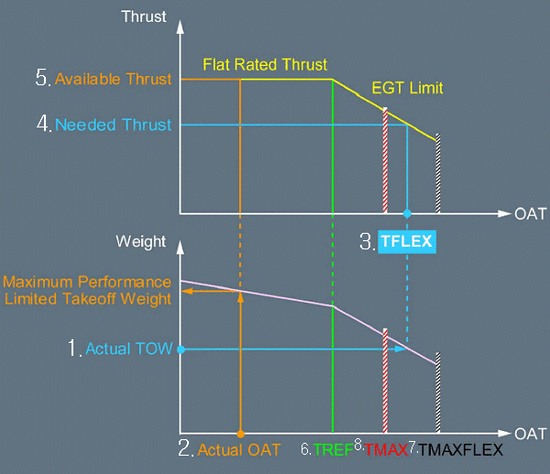Derated Thrust: Difference between revisions
Jump to navigation
Jump to search
No edit summary |
Updated image format with direct embed instead of gallery |
||
| Line 7: | Line 7: | ||
Derated thrust takeoffs are part of overall reduced thrust operations, and are distinct from "assumed temperature" methods, although both are designed to limit engine stress and fuel consumption. | Derated thrust takeoffs are part of overall reduced thrust operations, and are distinct from "assumed temperature" methods, although both are designed to limit engine stress and fuel consumption. | ||
== | == Image == | ||
[[File:Derated1.gif|600px|thumb|center|A reduced thrust takeoff is a takeoff that is accomplished utilising less thrust than the engines are capable of producing under the existing conditions of temperature and pressure altitude.]] | |||
File:Derated1.gif|A reduced thrust takeoff is a takeoff that is accomplished utilising less thrust than the engines are capable of producing under the existing conditions of temperature and pressure altitude. | |||
[https://skybrary.aero/articles/reduced-thrust-takeoff Source Reference – SKYbrary] | [https://skybrary.aero/articles/reduced-thrust-takeoff Source Reference – SKYbrary] | ||
Revision as of 13:38, 25 March 2025
Derated Thrust
Derated thrust refers to a takeoff configuration in which an engine is intentionally operated at less than its maximum certified thrust output. This practice is employed to reduce engine wear and extend engine life while still providing sufficient thrust for safe takeoff under the prevailing conditions.
The concept of derated thrust is commonly applied at airports where runway length, ambient temperature, pressure altitude, and aircraft weight allow for a lower power setting without compromising performance or safety margins.
Derated thrust takeoffs are part of overall reduced thrust operations, and are distinct from "assumed temperature" methods, although both are designed to limit engine stress and fuel consumption.
Image

